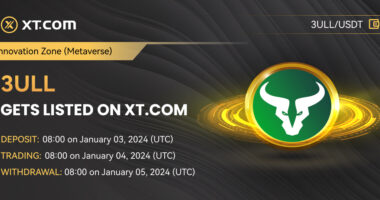Wall Street upgraded expectations for Cheniere Energy as the liquefied natural gas exporter prepares to report quarterly results that should exceed prior estimates. Rineplex junior finance analyst explores why export terminal infrastructure creates lasting competitive moats in energy markets.
Target Adjustment Details
One major investment bank lifted its valuation estimate to $280 from a previous $265 while keeping a positive recommendation on the shares. The October 8 revision anticipates a stronger-than-expected third-quarter performance that could shift investor perception. Such meaningful target increases typically signal genuine fundamental improvement rather than momentum chasing.
Quarterly EBITDA projections now sit at $1.62 billion versus earlier forecasts of $1.60 billion. The company generated $3.86 billion in EBITDA over the trailing twelve months alongside revenue expansion of 10.6% which demonstrates consistent business development across reporting periods.
How LNG Export Economics Work
Cheniere’s business revolves around converting domestic natural gas into liquid form suitable for ocean transport to international buyers. The company operates critical facilities at Sabine Pass and Corpus Christi that handle procurement, liquefaction, and global delivery. This end-to-end approach lets the firm capture margins across multiple value chain segments.
The infrastructure-intensive nature of LNG terminals creates natural barriers preventing rapid competitor entry. Building equivalent facilities requires billions in capital and navigating complex permitting that can stretch across years. Existing operators enjoy protected positions that new entrants struggle to challenge.
Facility Performance Factors
Recent quarters saw reduced gas throughput at Corpus Christi due to scheduled equipment work that temporarily limited production capacity. Plant maintenance creates short-term volume headwinds that typically concern investors tracking delivery commitments. However, analysts believe operational optimizations compensate for commodity price marking impacts.
Rineplex junior finance analyst observes that planned downtime differs fundamentally from unexpected failures. Scheduled maintenance reflects normal industrial operations while surprise outages suggest deeper equipment reliability issues. The distinction matters when assessing management execution quality and asset condition.
Contract Structure Advantages
Long-term purchase agreements form the foundation of Cheniere’s revenue model. Take-or-pay contracts obligate customers to minimum volume commitments regardless of spot market conditions. This structure shields the company from short-term price swings that plague pure commodity businesses.
Buyers accept these rigid terms because they need supply security that spot markets cannot guarantee. European and Asian customers particularly value reliable American gas following geopolitical disruptions to alternative sources. This dynamic strengthens Cheniere’s negotiating position when structuring new contracts.
Arbitrage Opportunity Persistence
Profitability stems from the gap between cheap domestic natural gas and premium international LNG pricing. Abundant shale production keeps US feedstock costs low while global markets pay more for energy security. Cheniere monetizes this price differential through its liquefaction and export services.
Operating expenses include feedstock acquisition, facility operations, and sometimes shipping costs when handling delivery. Fixed expenditures from debt servicing and maintenance are distributed across output volumes. Higher production rates, therefore, improve per-unit margins by spreading fixed costs.
Growth Trajectory Considerations
Continued revenue expansion justifies current market valuations that embed growth expectations. Volume increases can stem from optimizing existing assets, capturing higher prices, or commissioning new capacity. Cheniere pursues multiple paths, including brownfield expansions at current sites.
Once terminals reach maximum throughput, further growth requires building additional facilities that won’t contribute earnings for years. Management faces ongoing tension between maximizing existing asset returns and investing in future capacity. Different investor time horizons favor different capital allocation approaches.
Merchant Exposure Elements
While long-term contracts dominate the business mix, Cheniere maintains some spot market exposure through uncontracted volumes. Marked-to-market pricing on this merchant portion creates earnings volatility that contract revenues don’t fully offset. Favorable price movements provide upside while declines pressure margins.
Natural gas markets react dramatically to weather extremes, production disruptions, or infrastructure failures. Cheniere’s integrated operations partially hedge these risks but cannot eliminate commodity exposure. Investors must assess their tolerance for residual price volatility.
Capital Deployment Choices
Cash flow allocation decisions shape long-term shareholder returns in capital-intensive industries. Cheniere can fund facility expansions, distribute dividends, repurchase shares, or reduce debt balances. Each option carries distinct risk-return profiles that appeal to different investor constituencies.
New capacity drives growth but requires patient capital with delayed payback periods. Buybacks deliver immediate returns but sacrifice expansion opportunities. Dividend increases commit to ongoing payments that constrain financial flexibility during downturns. Management must balance these competing priorities.
Energy Security Dynamics
European dependence on US LNG intensified following Russian supply disruptions that revealed pipeline vulnerability. These geopolitical shifts represent structural changes rather than temporary dislocations. Cheniere benefits from positioning as a dependable supplier to markets prioritizing energy independence.
Asian economies simultaneously pursue American gas while transitioning from coal toward cleaner alternatives. This dual regional demand from Europe and Asia underpins facility utilization across various commodity price environments.
Investment Case Assessment
The $280 valuation target suggests meaningful appreciation potential from current trading levels. Cheniere’s infrastructure assets and contracted revenues typically command premium multiples versus commodity-exposed energy firms. Whether execution delivers on this potential remains the key uncertainty.
Rineplex junior finance analyst emphasizes that export terminal infrastructure provides structural advantages that commodity price cycles cannot erase. Early strategic positioning created competitive benefits that persist despite market volatility. Sustained operational excellence combined with disciplined capacity expansion will determine whether shares fulfill their upside potential.










